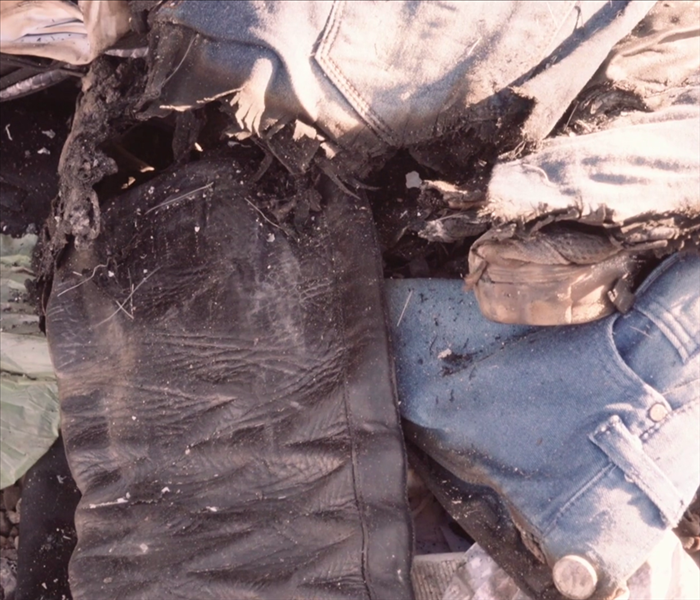Cleaning Clothing After A Fire in Orlando
6/7/2019 (Permalink)
 Sort through clothing carefully to make sure you only attempt to wash items that are salvageable. Discard items that have been burned and have holes.
Sort through clothing carefully to make sure you only attempt to wash items that are salvageable. Discard items that have been burned and have holes.
Recovering from a fire in Orlando can be a long, time-consuming process, even if there was little to any physical or structural damage. Just the smoke from fire alone can create a significant amount of damage, which can be difficult to mitigate. Clothing, furniture, and upholstery can all reek of smoke, even if they are far from the flames and in some cases can even be stained with soot. In most cases, you will likely need to hire a professional remediation company to restore furniture and upholstery, but you may be able to restore clothing on your own. Here are four steps to cleaning clothing after a fire.
1. Inspect Clothing Carefully to See What Can Be Salvaged
Some clothing may have burn holes or be stained or damaged beyond your ability to salvage it. Because clothing restoration is a time-consuming process, you want to focus on only what can be salvaged. Your fire insurance will most likely cover the cost of replacing clothing that cannot be salvaged.
2. Deodorize
Before clothing can be cleaned it will need to first be deodorized through a process called an ozone treatment. Ozone treatment is an oxidation process that cleans your clothing similar to the way rain cleans the air. Before you attempt to clean your clothes, it is extremely important to have them professionally deodorized with this unique treatment. Using ordinary fabric deodorizers will merely mask the smell temporarily, but eventually, the perfume of the deodorizer will evaporate, leaving your clothing once again reeking of smoke. The smell will also permeate any new clothing you purchase, so it is vitally important to have them professionally deodorized. In some cases, a fire restorer will use an ozone generator and in other cases, they will deodorize them in an ozone room.
3. Sort Remaining Clothing According to Type
Some types of fabric will be more difficult to get the smoke smell, soot stains or other stains out of, so you want to sort clothing by recommended care (found on the label), color (Light/ medium/ dark) and degree of soil (light/ medium/ heavy). You may end up with several small loads of clothing, but you want to keep them separate rather than combine them into larger loads. You will almost invariably have to wash each item several times, so it is more important to sort them by care label than you might with a single wash. Some clothing will need to be taken to an Orlando dry cleaning facility, but they may need to be professionally wet cleaned in spite of the dry clean only label.
4. Choose the Right Detergent
Different detergents will be more effective at removing scents, stains, soot and soil from different fabrics. The majority of clothing items will most likely be cotton, polyester, or poly/cotton blends. The effectiveness of cleaning will depend largely on the type of fabric and the type of detergent used. In tests, 100% polyester has the least likelihood of being returned to its original color and state. Pure cotton and poly/cotton blends are most effectively treated by washing in warm water anywhere from one to four times with either a liquid detergent or a low phosphate powder detergent and a liquid chlorine bleach. Because bleach will damage some fabrics and is not generally safe to use on darker clothing, it is better to use liquid detergent on darker clothing. Lighter clothing and whites will generally fair better with chlorine bleach. Powder detergent on its own is only partially effective at returning clothing to its original state. Dry cleaning is also the least effective method, so some dry-clean-only clothing may not ever return to its original condition.





 24/7 Emergency Service
24/7 Emergency Service